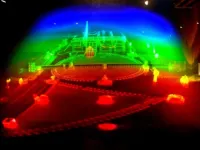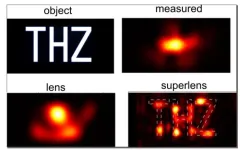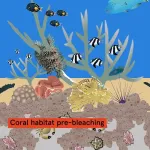(Press-News.org) Correction (Oct. 17, 2023): The paper’s title has been corrected to “Deep Learning-Predicted Dihydroartemisinin Rescues Osteoporosis by Maintaining Mesenchymal Stem Cell Stemness through Activating Histone 3 Lys 9 Acetylation
Artificial intelligence has exploded in popularity and is being harnessed by some scientists to predict which molecules could treat illnesses, or to quickly screen existing medicines for new applications. Researchers reporting in ACS Central Science have used one such deep learning algorithm, and found that dihydroartemisinin (DHA), an antimalarial drug and derivative of a traditional Chinese medicine, could treat osteoporosis as well. The team showed that in mice, DHA effectively reversed osteoporosis-related bone loss.
In healthy people, there is a balance between the osteoblasts that build new bone and osteoclasts that break it down. But when the “demolition crew” becomes overactive, it can result in bone loss and a disease called osteoporosis, which typically affects older adults. Current treatments for osteoporosis primarily focus on slowing the activity of osteoclasts. But osteoblasts — or more specifically, their precursors known as bone marrow mesenchymal stem cells (BMMSCs) — could be the basis for a different approach. During osteoporosis, these multipotent cells tend to turn into fat-creating cells instead, but they could be reprogrammed to help treat the disease. Previously, Zhengwei Xie and colleagues developed a deep learning algorithm that could predict how effectively certain small-molecule drugs reversed changes to gene expression associated with the disease. This time, joined by Yan Liu and Weiran Li, they wanted to use the algorithm to find a new treatment strategy for osteoporosis that focused on BMMSCs.
The team ran the program on a profile of differently expressed genes in newborn and adult mice. One of the top-ranked compounds identified was DHA, a derivative of artemisinin and a key component of malaria treatments. Administering DHA extract for six weeks to mice with induced osteoporosis significantly reduced bone loss in their femurs and nearly completely preserved bone structure. To improve delivery, the team designed a more robust system using injected, DHA-loaded nanoparticles. Bones of mice with osteoporosis that received the treatment were similar to those of the control group, and the treatment showed no evidence of toxicity. In further tests, the team determined that DHA interacted with BMMSCs to maintain their stemness and ultimately produce more osteoblasts. The researchers say that this work demonstrates that DHA is a promising therapeutic agent for osteoporosis.
The authors acknowledge funding from the National Natural Science Foundations of China, the Beijing International Science and Technology Cooperation, the Beijing Natural Science Foundation, Peking University Clinical Medicine Plus X - Young Scholars Project, the Ten-Thousand Talents Program, the Key R & D Plan of Ningxia Hui Autonomous Region, the Innovative Research Team of High-Level Local Universities in Shanghai, the Beijing Nova Program, the China National Postdoctoral Program for Innovative Talents, the China Postdoctoral Science Foundation, and the Peking University Medicine Sailing Program for Young Scholars’ Scientific & Technological Innovation.
The paper’s abstract will be available on Oct. 18 at 8 a.m. Eastern time here: http://pubs.acs.org/doi/abs/10.1021/acscentsci.3c00794
The American Chemical Society (ACS) is a nonprofit organization chartered by the U.S. Congress. ACS’ mission is to advance the broader chemistry enterprise and its practitioners for the benefit of Earth and all its people. The Society is a global leader in promoting excellence in science education and providing access to chemistry-related information and research through its multiple research solutions, peer-reviewed journals, scientific conferences, eBooks and weekly news periodical Chemical & Engineering News. ACS journals are among the most cited, most trusted and most read within the scientific literature; however, ACS itself does not conduct chemical research. As a leader in scientific information solutions, its CAS division partners with global innovators to accelerate breakthroughs by curating, connecting and analyzing the world’s scientific knowledge. ACS’ main offices are in Washington, D.C., and Columbus, Ohio.
To automatically receive news releases from the American Chemical Society, contact newsroom@acs.org.
Follow us: Twitter | Facebook | LinkedIn | Instagram
END
AI identifies antimalarial drug as possible osteoporosis treatment
2023-10-18
ELSE PRESS RELEASES FROM THIS DATE:
Simplifying the generation of three-dimensional holographic displays
2023-10-18
Holograms that offer a three-dimensional (3D) view of objects provide a level of detail that is unattainable by regular two-dimensional (2D) images. Due to their ability to offer a realistic and immersive experience of 3D objects, holograms hold enormous potential for use in various fields, including medical imaging, manufacturing, and virtual reality. Holograms are traditionally constructed by recording the three-dimensional data of an object and the interactions of light with the object. However, this technique is computationally highly intensive as it requires ...
Superlensing without a super lens: physicists boost microscopes beyond limits
2023-10-18
Ever since Antonie van Leeuwenhoek discovered the world of bacteria through a microscope in the late seventeenth century, humans have tried to look deeper into the world of the infinitesimally small.
There are, however, physical limits to how closely we can examine an object using traditional optical methods. This is known as the ‘diffraction limit’ and is determined by the fact that light manifests as a wave. It means a focused image can never be smaller than half the wavelength of light used to observe an object.
Attempts to break this limit with “super lenses” have all hit the hurdle of extreme visual losses, making the lenses opaque. ...
Collaborative study focuses on using computer algorithms to find molecular adaptations to improve COVID-19 drugs
2023-10-18
As the COVID-19 pandemic scattered and isolated people, researchers across Virginia Tech connected for a data-driven collaboration seeking improved drugs to fight the disease and potentially many other illnesses.
A multidisciplinary collaboration spanning several colleges at Virginia Tech resulted in a newly published study, “Data Driven Computational Design and Experimental Validation of Drugs for Accelerated Mitigation of Pandemic-like Scenarios,” in the Journal of Physical Chemistry Letters.
The study focuses on using computer algorithms to generate adaptations to ...
Study predicts potential for 110% electricity increases in U.S. urban buildings
2023-10-18
A research study led by University of Oklahoma assistant professor Chenghao Wang and recently published in the journal Nature Communications tackled the critical issue of how city-scale building energy consumption in urban environments will evolve under the influence of climate change.
Fossil fuels account for approximately 40% of all building energy use in urban city centers in the United States, and the U.S. Energy Information Administration reports that residential and commercial buildings in U.S. cities are one of the major energy ...
Open access: Need to move away from transformative agreements
2023-10-18
Sweden is far ahead when it comes to promoting open access to scholarly publications. But there is risk of getting stuck in a permanent transformation that favours large commercial publishers. A new report from the Association of Swedish Higher Education Institutions develops a strategy on how to work in negotiations with the publishers.
In 2021, the Association of Swedish Higher Education Institutions (Sveriges universitets- och högskoleförbund, SUHF) convened a “Beyond transformative agreements” working group (the BTA group) to lay the foundation for further advancing the transition to open access. Now, the group ...
Graz University of Technology study on e-scooter accidents: more helmets and less speed reduce the injury risk
2023-10-18
The use of e-scooters has increased significantly in recent years, but so has the number of accidents involving this relatively new form of transport. At the same time, knowledge about injury mechanisms in this area was still very limited. In the project SURF, funded by Zukunftsfonds Steiermark, the Vehicle Safety Institute at Graz University of Technology (TU Graz) investigated this topic using Human Body Models and derived recommendations to reduce the injury risk in e-scooter accidents.
Put on a helmet, decrease speed and get off the pavement
As ...
Reef-devouring predator survives coral bleaching and feasts on the survivors
2023-10-18
Research conducted by marine biologists from the University of Sydney has found juvenile crown-of-thorns starfish can withstand tremendous heatwaves well above levels that kill coral. These starfish then develop into carnivorous predators that devour reefs just as they begin to regrow.
Crown-of-thorns starfish are native to the Great Barrier Reef and found in the Indo-Pacific region, but they are classified as a species of concern because the damage large populations cause to coral is more significant than any other species. ...
Does SARS-CoV-2 infection have urological effects?
2023-10-18
Research published in the Journal of Internal Medicine indicates that SARS-CoV-2 infection may worsen lower urinary tract symptoms (LUTS) in men.
The study included 17,986 men receiving medication for LUTS within the public healthcare system of Hong Kong in 2021–2022, half of whom had SARS-CoV-2 infection. The group with SARS-CoV-2 had significantly higher rates of retention of urine (4.55% versus 0.86%); blood in the urine (1.36% versus 0.41%); clinical urinary tract infection (4.31% versus 1.49%); bacteria in the urine (9.02% versus 1.97%); and addition of 5-alpha reductase inhibitors, which are drugs prescribed for enlarged prostate. (0.50% versus 0.02%). These urological ...
How did the initial COVID-19 wave affect mental health in the UK?
2023-10-18
New research published in Economic Inquiry reports substantial increases in psychological distress in the UK during the first wave of the COVID-19 pandemic.
Mental health effects were more pronounced for females; younger individuals; Black, Asian, and minority ethnic communities; and migrants. Also, people who had financial worries, loneliness, or were living in overcrowded dwellings experienced significantly worse mental health deterioration during the first wave.
The study used data from the UKHLS, also known as Understanding Society, which is a household panel dataset that captures, among other things, information from adults about their economic and social circumstances, ...
Heat-tolerant predatory sea stars will likely be a threat to coral during climate change
2023-10-18
Population outbreaks of the crown-of-thorns sea star (COTS), a predator of coral, can cause widespread coral mortality. COTS are herbivorous as juveniles but then switch to coral consumption as they grow to adulthood. When researchers exposed juvenile COTS to heat stress scenarios at time and temperature durations designed to reflect conditions that cause coral bleaching and mortality, juveniles exhibited tolerance to heatwave conditions well above levels that kill coral.
The findings, which are published in Global Change Biology, indicate that juvenile COTS are likely to persist as major coral predators in reefs already vulnerable to the effects of climate change.
“This ...









